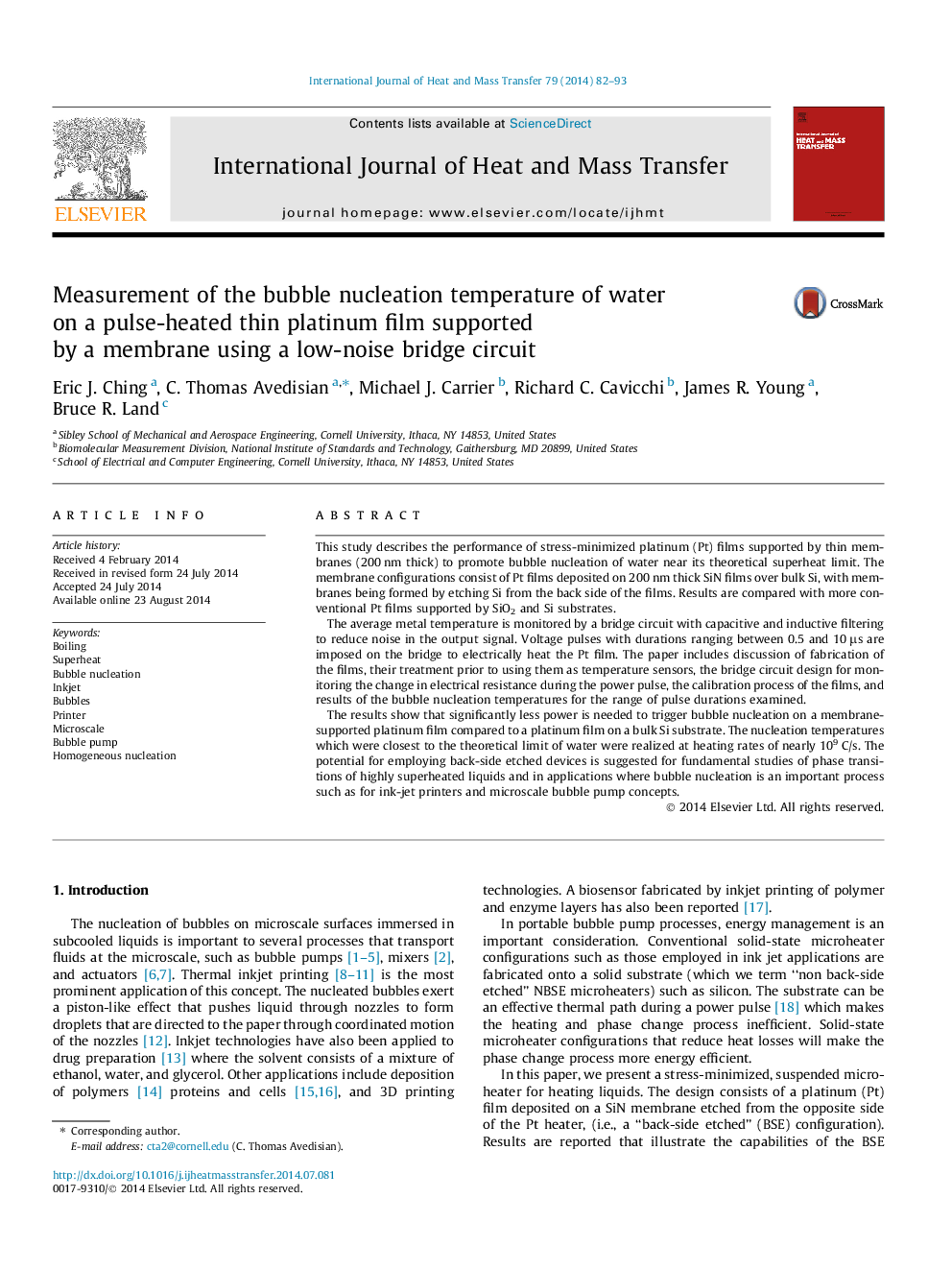| Article ID | Journal | Published Year | Pages | File Type |
|---|---|---|---|---|
| 657389 | International Journal of Heat and Mass Transfer | 2014 | 12 Pages |
This study describes the performance of stress-minimized platinum (Pt) films supported by thin membranes (200 nm thick) to promote bubble nucleation of water near its theoretical superheat limit. The membrane configurations consist of Pt films deposited on 200 nm thick SiN films over bulk Si, with membranes being formed by etching Si from the back side of the films. Results are compared with more conventional Pt films supported by SiO2 and Si substrates.The average metal temperature is monitored by a bridge circuit with capacitive and inductive filtering to reduce noise in the output signal. Voltage pulses with durations ranging between 0.5 and 10 μs are imposed on the bridge to electrically heat the Pt film. The paper includes discussion of fabrication of the films, their treatment prior to using them as temperature sensors, the bridge circuit design for monitoring the change in electrical resistance during the power pulse, the calibration process of the films, and results of the bubble nucleation temperatures for the range of pulse durations examined.The results show that significantly less power is needed to trigger bubble nucleation on a membrane-supported platinum film compared to a platinum film on a bulk Si substrate. The nucleation temperatures which were closest to the theoretical limit of water were realized at heating rates of nearly 109 C/s. The potential for employing back-side etched devices is suggested for fundamental studies of phase transitions of highly superheated liquids and in applications where bubble nucleation is an important process such as for ink-jet printers and microscale bubble pump concepts.
